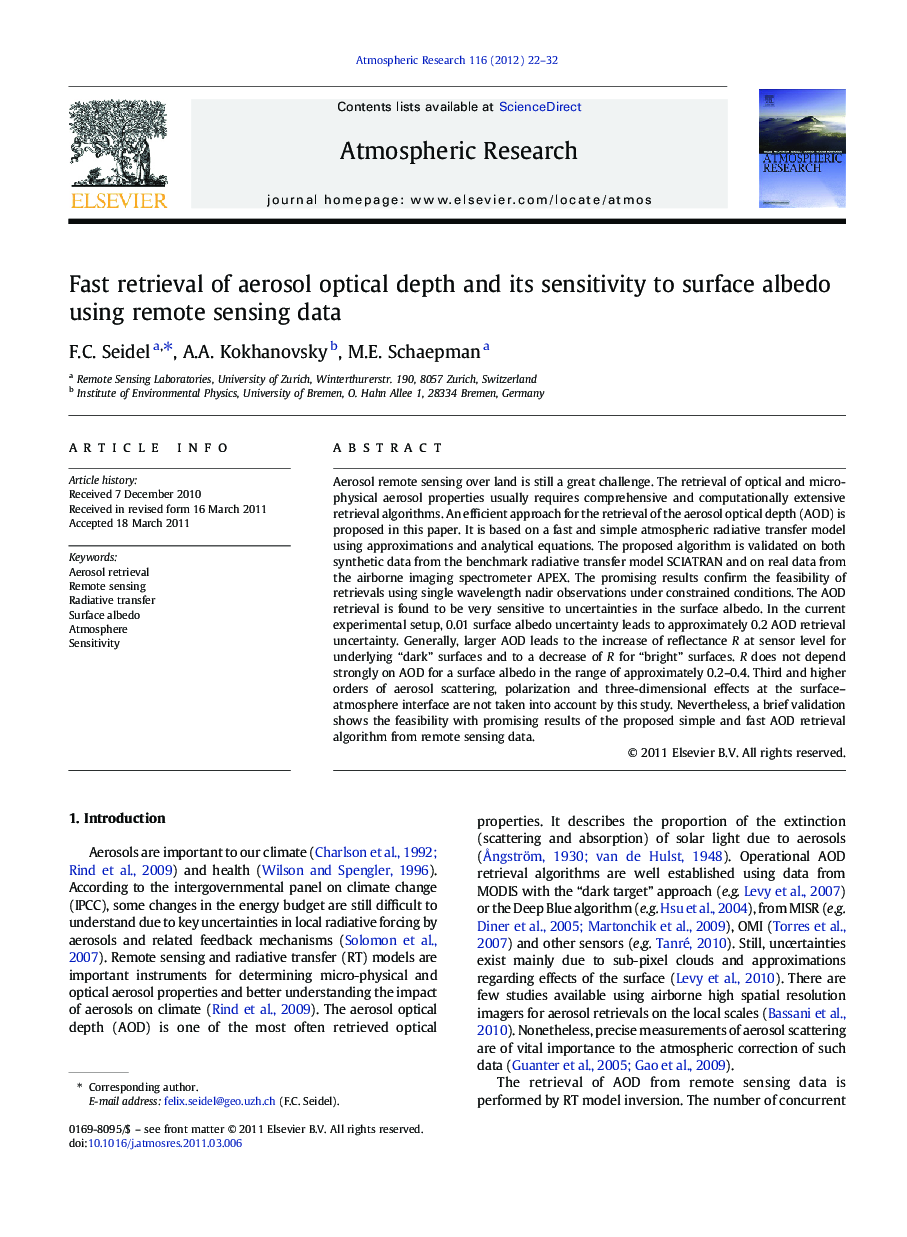| Article ID | Journal | Published Year | Pages | File Type |
|---|---|---|---|---|
| 4450208 | Atmospheric Research | 2012 | 11 Pages |
Aerosol remote sensing over land is still a great challenge. The retrieval of optical and micro-physical aerosol properties usually requires comprehensive and computationally extensive retrieval algorithms. An efficient approach for the retrieval of the aerosol optical depth (AOD) is proposed in this paper. It is based on a fast and simple atmospheric radiative transfer model using approximations and analytical equations. The proposed algorithm is validated on both synthetic data from the benchmark radiative transfer model SCIATRAN and on real data from the airborne imaging spectrometer APEX. The promising results confirm the feasibility of retrievals using single wavelength nadir observations under constrained conditions. The AOD retrieval is found to be very sensitive to uncertainties in the surface albedo. In the current experimental setup, 0.01 surface albedo uncertainty leads to approximately 0.2 AOD retrieval uncertainty. Generally, larger AOD leads to the increase of reflectance R at sensor level for underlying “dark” surfaces and to a decrease of R for “bright” surfaces. R does not depend strongly on AOD for a surface albedo in the range of approximately 0.2–0.4. Third and higher orders of aerosol scattering, polarization and three-dimensional effects at the surface–atmosphere interface are not taken into account by this study. Nevertheless, a brief validation shows the feasibility with promising results of the proposed simple and fast AOD retrieval algorithm from remote sensing data.
Research Highlights► iSMART provides fast AOD retrievals from remote sensing data. ► Retrieved AOD accuracy is comparable to the MODIS requirement for dark surfaces. ► AOD retrievals are very sensitive to surface albedo and its uncertainties. ► AOD retrievals at the critical surface albedo are inaccurate.
